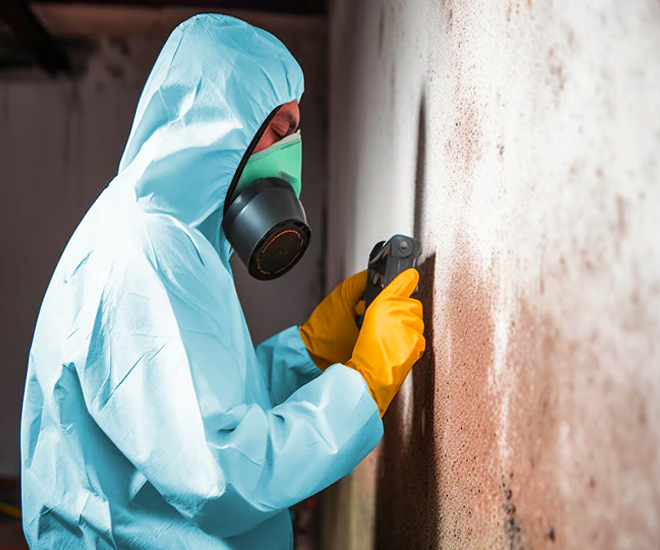Testing Air Quality After Mold Remediation
Testing Air Quality After Mold Remediation
Blog Article
Effective Article Mold And Mildew Removal Solutions for Your Home
Mold growth in homes can be a persistent issue, typically requiring a systematic strategy for efficient post-remediation solutions. From recognizing the elements that contribute to mold and mildew advancement to applying appropriate cleaning strategies and dampness control steps, the procedure can be detailed yet essential for maintaining a healthy and balanced living environment. Furthermore, checking out natural remediation remedies and establishing a routine for recurring maintenance are vital components of a thorough mold and mildew remediation strategy. As house owners strive to deal with mold worries, finding the most efficient remedies comes to be vital for the wellness of their houses.
Comprehending Mold Development Aspects
Mold and mildew development is affected by a range of elements that are important to understand in order to properly deal with and avoid its spreading. Recognizing these variables is vital in executing successful mold remediation techniques. The primary factor contributing to mold and mildew development is dampness. Mold and mildew spores need moisture to prosper and sprout, making humid or wet environments extremely prone to mold and mildew problems. Poor air flow can also result in moisture build-up, producing a perfect breeding place for mold.

In addition, air flow and light exposure can impact mold and mildew growth. Locations that do not have correct air flow and natural light are extra vulnerable to mold and mildew growth. By attending to these variables thoroughly, individuals can effectively mitigate mold and mildew growth and safeguard their living atmospheres.
Correct Mold Cleansing Methods
Making use of reliable cleansing methods is necessary in resolving and avoiding the reappearance of mold contamination in interior atmospheres. The first step in appropriate mold cleansing is to contain the damaged location to prevent the spread of spores to unpolluted areas.

Implementing Moisture Control Actions
To properly protect against mold and mildew development and contamination in indoor environments, implementing dampness control procedures is critical. Wetness is the main factor that fuels mold advancement, making it vital to manage humidity levels within the home. One remove mold stains from linen reliable procedure is to use dehumidifiers to keep indoor humidity degrees below 60%. In addition, making sure proper ventilation in locations susceptible to moisture accumulation, such as kitchen areas and bathrooms, can assist decrease the threat of mold development. Frequently examining and repairing any type of leaks in plumbing, roofs, or windows is also necessary in avoiding excess wetness buildup. Making use of exhaust fans while cooking or showering, and enabling air blood circulation by maintaining furnishings a little far from walls can aid in moisture control. Moreover, making use of moisture-resistant products in high-humidity areas, such as mold-resistant drywall and paints, can be useful. By diligently carrying out these dampness control steps, home owners can efficiently lower the possibility of mold and mildew recontamination and preserve a healthy interior environment.
Making Use Of Natural Removal Solutions
After successfully carrying out dampness control procedures to protect against mold development in indoor settings, homeowners can currently discover the performance of all-natural removal services in maintaining a healthy and balanced living room. Natural removal services use eco friendly approaches to deal with mold and mildew, making them a popular choice for those looking for non-toxic options. By including these natural removal remedies right into their cleaning routines, house owners can properly battle mold and mildew growth while advertising a healthier indoor atmosphere for themselves and their family official statement members.

Keeping a Mold-Free Setting
In order to avoid mold and mildew reoccurrence and ensure a consistently mold-free atmosphere, it is crucial for house owners to implement proactive maintenance methods. Routinely examining locations prone to mold development, such as washrooms, attics, kitchen areas, and cellars, is important. Attending to any type of leaks, water damages, or excess dampness without more delay can significantly minimize the threat of mold development. Post Mold Remediation. Proper ventilation in locations with high humidity levels is additionally key to preventing mold growth. Making use of dehumidifiers or exhaust fans can aid keep optimum moisture degrees and inhibit mold and mildew spores from growing.
Additionally, keeping tidiness in the home is essential for mold avoidance. Maintaining interior plants in check and making sure correct drainage in outside landscape design can decrease moisture build-up, decreasing the likelihood of mold and mildew invasions.
Verdict
To conclude, it is necessary to attend to mold and mildew growth variables, utilize proper cleansing methods, execute moisture control procedures, use natural remediation services, and keep a mold-free setting in order to successfully deal with blog post mold and mildew remediation in your home - After mold remediation. By following these approaches, you can protect against mold from repeating and ensure a healthy and balanced living atmosphere for you and your family members
The main aspect contributing to mold growth is moisture. Mold and mildew spores require dampness to sprout and flourish, making damp or moist environments extremely prone to mold invasions.To successfully protect against mold and mildew development and contamination in interior settings, implementing moisture control actions is critical. In addition, guaranteeing correct ventilation in areas prone to moisture accumulation, such as washrooms and kitchens, can help reduce the danger of mold development.After effectively carrying out moisture control measures to protect against mold development in interior atmospheres, house owners can now discover the effectiveness of natural removal services in keeping a healthy and balanced living space.
Report this page